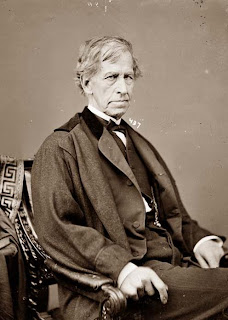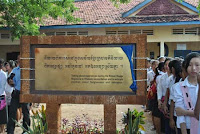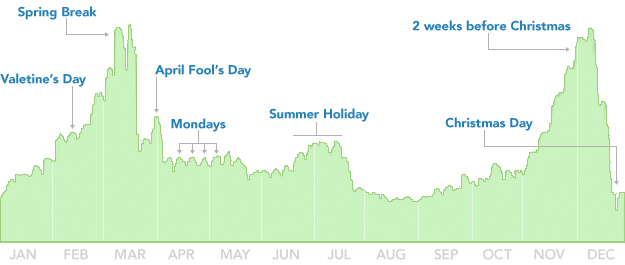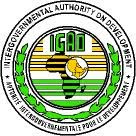Two weeks ago, we unveiled the beginning of a contest to decide (by you the reader) who was the greatest naval officer, North and South. In the final week, we will square the Union and Confederate winner face to face to see who wins. Last week's winner was Rear Admiral John Dahlgren. For week three, we have several important Union officers up for your vote. You can vote on the left panel of this blog. We have provided the following information about each officer courtesy of the Naval History and Heritage Command:
 Samuel P. Lee
Samuel P. LeeSamuel Phillips Lee was born in Fairfax County, Virginia, on 13 February 1812. He was appointed a Midshipman in the U.S. Navy in November 1825 and subsequently saw extensive service at sea, including combat action during the Mexican War and exploration, surveying and oceanographic duty. At the outbreak of the Civil War in 1861, he was captain of the sloop of war
Vandalia in the East Indies, sailing her home on his own initiative to join the blockade of the Southern coast. Commander Lee commanded the new steam sloop USS
Oneida during the New Orleans campaign and subsequent operations on the Mississippi River in the first half of 1862.
In September 1862, S.P. Lee was placed in command of the North Atlantic Blockading Squadron with the rank of Acting Rear Admiral. He led this force for over two years, during which it was responsible for the blockade of the North Carolina coast and operations on North Carolina and Virginia inland waters, all areas of very active combat between Union and Confederate forces. Acting Rear Admiral Lee transferred to the command of the Mississippi Squadron in October 1864 and led it to the end of the Civil War in 1865.
Reverting to his permanent rank of Captain after the Civil War, Lee had extensive service in the Washington, D.C., area. He was promoted to Rear Admiral in 1870 and retired from active service in February 1873. Rear Admiral Samuel Phillips Lee died at Silver Spring, Maryland, on 7 June 1897.
 William Cushing
William CushingWilliam Barker Cushing was born in Delafield, Wisconsin, on 4 November 1842, but spent most of his childhood in Fredonia, New York. He attended the U.S. Naval Academy from 1857 until March 1861, when his high-spirited behavior led to his resignation. The outbreak of the Civil War brought him back into the service, and he soon distinguished himself as an officer of extraordinary initiative and courage. Promoted to the rank of Lieutenant in mid-1862, Cushing served as Executive Officer of the gunboat
Commodore Perry, then was given command of the tug
Ellis, which was lost under heroic circumstances on 25 November 1862. He subsequently commanded the gunboats Commodore Barney, Shokokon and
Monticello. During this time, he led several daring reconnaissance and raiding excursions into Confederate territories.
On the night of 27-28 October 1864, Cushing and a small crew took the Navy steam launch
Picket Boat Number One upriver to Plymouth, NC, where they attacked and sank the Confederate ironclad ram CSS
Albemarle with a spar torpedo. This action made him a national celebrity, and he was quickly promoted to the rank of Lieutenant Commander. In January 1865, Cushing helped lead the Navy landing force in the conquest of Fort Fisher, NC, again distinguishing himself.
Following the Civil War, LCdr. Cushing was executive officer of USS
Lancaster and commanding officer of USS
Maumee. Promoted to Commander in 1872, he was captain of USS
Wyoming in 1873-74. In November 1873, he boldly confronted Spanish authorities in Cuba to save the lives of many passengers and crew of the steamer
Virginius, which had been captured bringing men and supplies to Cuban revolutionaries. While serving as Executive Officer of the Washington Navy Yard, DC, Commander Cushing's always delicate health gave way and he died on 17 December 1874.
 Charles Wilkes
Charles Wilkes[abbreviated biography from history.navy.mil]
The outbreak of the Civil War, however, brought an interruption to his scientific work. On 19 April, he was detached from his duty with the expedition publication program in order to help destroy the Norfolk Navy Yard before Union forces abandoned it to the Confederacy. In May, Capt. Wilkes received orders to take command of the steam-powered frigate
San Jacinto. He arrived on board his new command on 27 August, at Monrovia, Liberia, just before she set sail to return to the United States. During the voyage home, he took her to the West Indies in search of the Southern commerce raider, CSS
Sumter, under the command of Capt. Raphael Semmes—later commanding officer of the famous Confederate cruiser CSS
Alabama. During that mission, his ship stopped at Cienfuegos, Cuba, for coal, and Wilkes learned that the South's commissioners to England and France, James Mason and John Slidell, had escaped from Charleston on board the fast coastal packet
Theodora and were then in Havana awaiting transportation to Europe.
San Jacinto quickly headed for Havana, hoping to catch
Theodora when she embarked upon her return trip but arrived a day late. He learned, however, that Mason and Slidell were still in Cuba and planned to board the British mail packet
Trent at St. Thomas for the voyage to Europe.
Thereupon, he concocted a plan to intercept Trent in Old Bahama Channel, some 230 miles east of Havana, and capture the two Confederate diplomats. On 8 November, the British ship steamed into sight, and Wilkes coerced her into stopping with two shots across her bow. A boarding party seized Mason and Slidell and their secretaries and then allowed the neutral ship to continue her voyage.
San Jacinto then headed home with her prisoners. Upon his arrival in Boston, Wilkes was loudly acclaimed for his action, but soon the clouds of war with Great Britain over the incident began to darken the horizon. Ultimately, the dubious legality of Wilkes' action and the threat of war with Britain and France brought a complete disavowal of Wilkes' act by the Federal Government and the release of the prisoners.
On 30 November, Capt. Wilkes was detached from
San Jacinto and ordered to duty with the Board of Naval Examiners. That assignment lasted until the following summer. He commanded the James River Flotilla briefly in July and August of 1862 and received his promotion to commodore at that time. On 29 August, Wilkes left that post and took over the Potomac River Flotilla. That assignment proved to be of short duration. On 8 September, he received orders to command the West India Squadron. Promoted to acting rear admiral, Wilkes directed the West India Squandron— primarily concerned with hunting down Southern commerce raiders and blockade runners—until the summer of 1863. On 1 June, he was detached from the squadron and, on the 30th, set sail from Havana for the United States in Roanoke.
Conflicts with the Navy Department, probably stemming from his treatment during the
Trent affair negotiations, culminated in Wilkes' court-martial early in 1864 over the publication of a letter he wrote to Gideon Welles castigating the Secretary for statements made against Wilkes in his annual report. On 26 April 1864, Acting Rear Admiral Wilkes was found guilty by court-martial of disobediance of orders, insubordination, and other specifications and was sentenced to receive a public reprimand and suspension from the service for three years. President Lincoln reduced the term of suspension to one year, at the conclusion of which Wilkes retired from the Navy. On 6 August 1866, he was promoted to rear admiral on the retired list and, for the remainder of his life, worked for the completion of publication of the results of the Wilkes Exploring Expedition. He also took time out to do some writing, including an autobiography. On 8 February 1877, Rear Admiral Wilkes died at Washington, D.C. Initially interred at Oak Hill Cemetery in Washington, his body was moved to Arlington National Cemetery in August 1909.
 John Winslow
John WinslowJohn A. Winslow was born in Wilmington, North Carolina, in 1811. He entered the Navy as a Midshipman in 1827, was promoted to the rank of Lieutenant in 1839 and to Commander in 1855. During the Mexican War, he was commended to gallantry for his activities at Tobasco. Soon after the outbreak of the Civil War, Commander Winslow was assigned as Executive Officer of the Western Gunboat Flotilla. He was injured while commanding the incomplete ironclad river gunboat
Benton in the Fall of 1861 and spent several months recovering.
Promoted to Captain in July 1862, Winslow returned to the Mississippi area for further service, but was detached late in the year. He took command of USS
Kearsarge in April 1863. Over the next year and a half, Captain Winslow patrolled European waters in search of Confederate raiders, keeping his ship and crew well-prepared for combat. On 19 June 1864, he led them to victory in one of the Civil War's most notable naval actions, the
battle between USS Kearsarge and CSS Alabama.
Winslow was promoted to the rank of Commodore as a result of this action. He became a Rear Admiral in 1870 and commanded the Pacific Squadron from then until 1872. Rear Admiral John A. Winslow died on 29 September 1873, soon after retiring from active naval service.
 Brazilians have just elected their 1st woman President.
Brazilians have just elected their 1st woman President.

















































